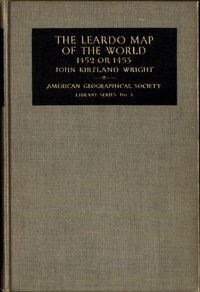The Leardo Map of the World, 1452 or 1453: In the Collections of the American Geographical Society
Author: John Kirtland Wright
Bookshelves: Encyclopedias/Dictionaries/Reference, History - General, Travel & Geography, Category: Art, Category: History - Early Modern (c. 1450-1750), Category: History - European, Category: History - Medieval/Middle Ages, Maps and Cartography

Summary
"The Leardo Map of the World, 1452 or 1453" by John Kirtland Wright is a historical account written in the early 20th century. This publication focuses on an analysis and presentation of an early world map created by the Venetian cartographer Giovanni Leardo, reflecting the geographical knowledge of the early Renaissance period. The book delves into Leardo’s depiction of the world, exploring its artistic and scientific aspects and the map's significance in the context of medieval geography. The opening of the work introduces the Leardo map itself and its historical context, noting that it was one of three known maps signed by Leardo, dated between 1452 and 1453. It is highlighted as an important artifact that showcases the geographical understanding and artistic conventions of the time just before the discovery of America. The text describes the map's design, noting its vibrant colors and unique features, such as an encircling calendar and various depictions of land, seas, and cities. It also addresses the map's theological allusions and its blending of classical and medieval cartographic traditions, setting the stage for a deeper exploration of the geographical knowledge that shaped medieval European thought. (This is an automatically generated summary.)
 LibraryManager
LibraryManager